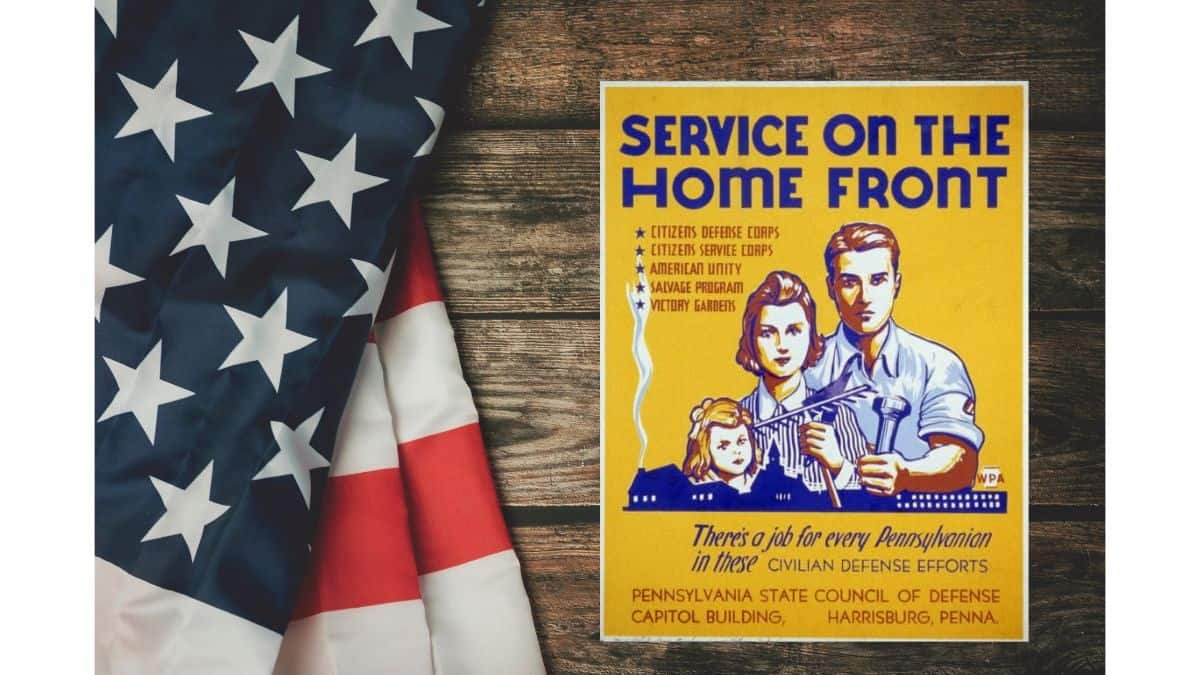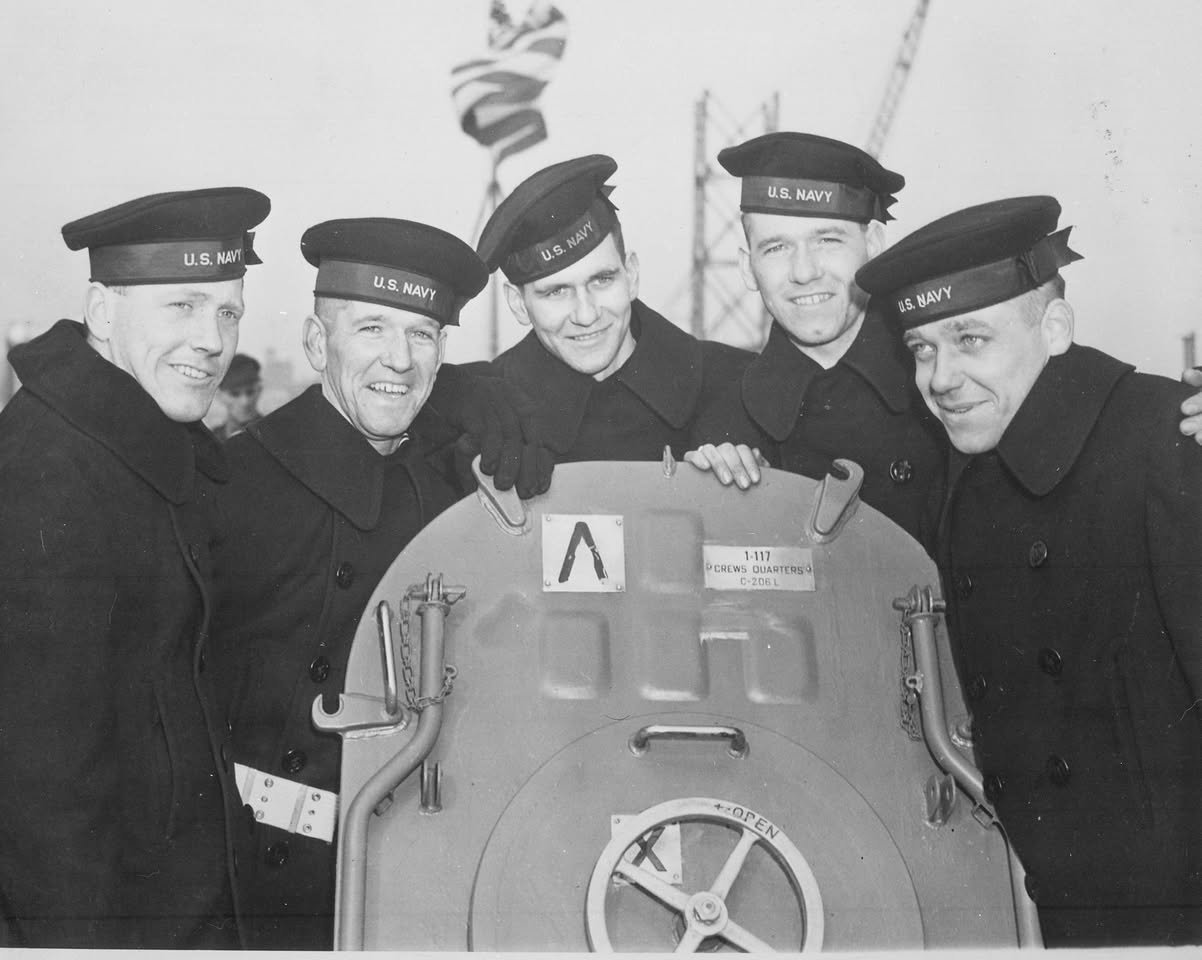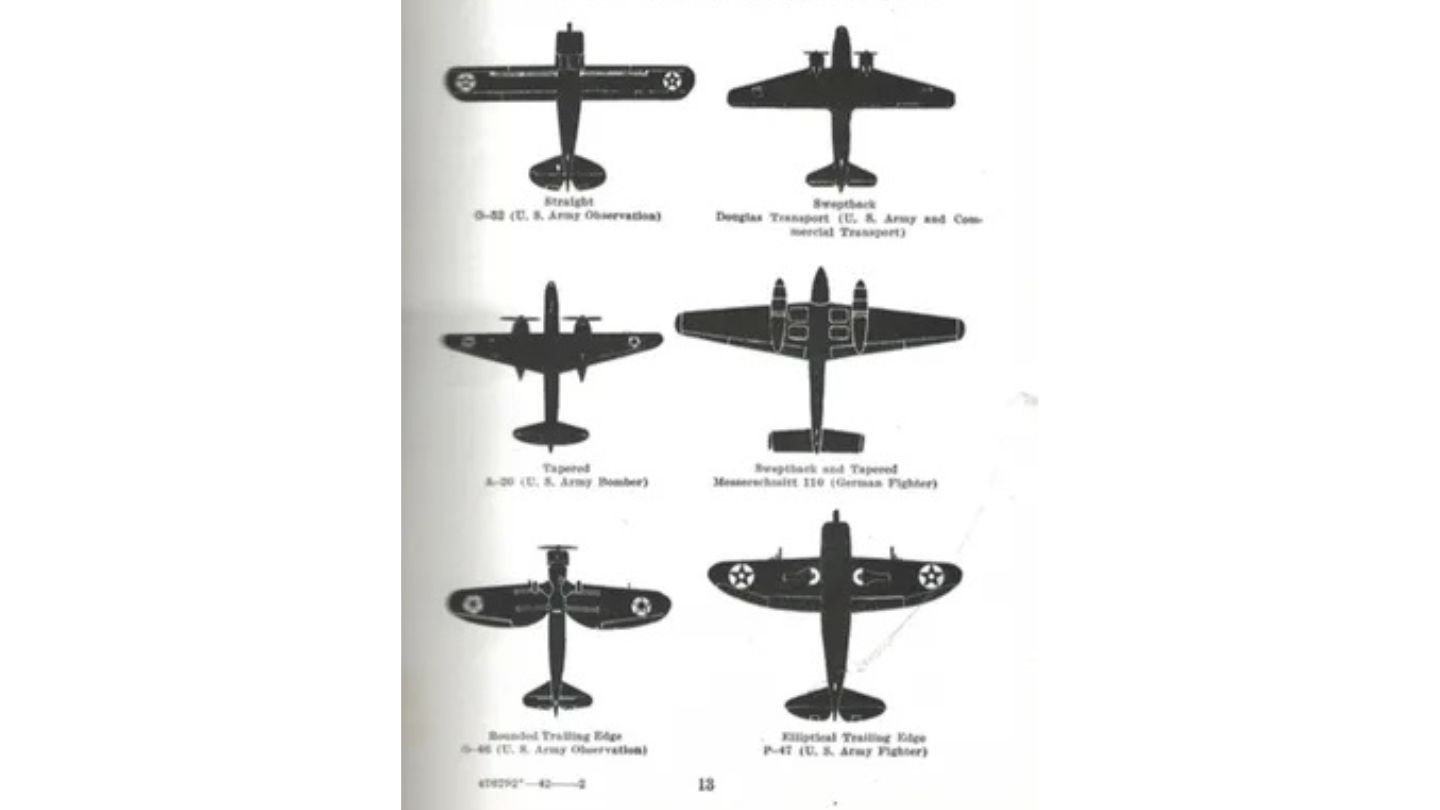People in the generations that came before me endured financial disaster and poverty, threats to national security, and lost family members during World War 2, yet they responded with great service and sacrifice to their country.
The Call to Fight
The Selective Training and Service Act, enacted on September 16, 1940, required all men aged 21 to 45 to register for the draft. Men were chosen for service by lottery. Two years later, the age was lowered to 18. By the end of the war, 34 million men had registered, with roughly one-third of them joining the military.
I don’t know how my dad knows this story. He would have been five months old when Japanese bombers attacked Pearl Harbor. Maybe the draft notice came much later. My grandfather, Amos, sat at the kitchen table crying. “How can I go fight?” He was holding a draft letter that told him to sell his farm equipment and prepare to join the military. He couldn’t sell the equipment. It was borrowed. He had nothing to leave behind for his wife and young sons. Amos had just returned home from the hospital after losing a third of his stomach to cancer. The family doctor helped my grandfather get a 4F card, excusing him from military duty.
Dick Crawford, 99, remembers hearing about the bombing of Pearl Harbor when he was sixteen. Friends hooked up a small radio to the car battery to listen to the reports. When he was old enough, Dick was sent by train to the state capital, an hour away, to be tested for military service. He waited through the rest of the war, wondering when he would be called, though it never happened. Dick served his country by caring for the family farm and providing food.
Most older adults I spoke with mentioned family members who were among the Americans who served in World War II. Marguerite Kerstetter from Richfield, PA, was eight years old when her brother Harvey was called to Germany in 1944. He was eighteen. Harvey took three pieces of shrapnel in his leg and returned to the U.S., where he recovered at Walter Reed Hospital. He told his little sister, “You never knew you could dig a foxhole so fast.”
Stars in the Window
Families of soldiers faced tremendous service and sacrifice. When young men were called to serve in World War II, families displayed a flag with a blue star for each member serving during combat. The Blue Star Service Flag was created and patented by a World War I Army Captain named Robert L. Queisser. The captain’s two sons served on the front lines in France in 1917. The captain’s words are recorded in the Congressional record: The world should know of those who give so much for liberty. The dearest thing in all the world to a father and mother—their children."
Jane Crone, 89, remembers seeing the blue star in the window of the house next door. The family’s son was serving in Germany. “One day, a big car pulled into the driveway, and two men in uniform got out and went to the door.” Later that day, the blue star flag was replaced by a gold star flag.
If a family member was killed in the war, a gold star was sewn over the blue one. These families became known as gold-star families, often referred to as “an honor no one wants.”
In 1942, after losing a friend at Pearl Harbor, five Sullivan brothers from Waterloo, Iowa, enlisted together and requested to be assigned to the same ship. When the U.S.S. Juneau was lost in the South Pacific, all five brothers perished. Their Gold Star parents, Tom and Alleta Sullivan, toured the country speaking to military plant workers, asking for increased production, and hopefully, a swifter end to the war. As a result of this family’s loss, the U.S. Military adopted the Sole Survivor Policy, which limited the number of draftees from a single family.
Although we hear little about it, the last Sunday of September has been designated as Gold Star Family Day since 1936. Several organizations continue to honor Gold Star Families. You can find more about them here:
The Sullivan brothers on board the cruiser USS Juneau at her commissioning: Joe, Frank, Al, Matt, and George (14 February 1942)
They Also Serve...
"They also serve" who stand and observe. Men who weren't called up for active duty, women, and teenagers participated in the war effort in their own ways.
A volunteer air raid warden helped most communities by sounding the alarm, patrolling the streets to ensure homes remained dark, and training people on how to respond to potential air attacks. School children, when they heard the air raid siren, would duck under their wooden school desks.
Marguerite Kerstetter, 91, recalls hearing the fire trucks and sirens blaring as they drove through the streets. When the whistles sounded, people had to turn off their lights and sit in darkness.
Some families used blackout bulbs manufactured by companies such as Westinghouse, General Electric, or Wabash Appliance Co. in Brooklyn. These bulbs were painted black, except for a small part of the yellow tip, which let a little light into the house.
Aside from Pearl Harbor, several air attacks occurred along the West Coast. Fire balloons, called “Fugos,” traveled farther inland, dropping up to 50 pounds of explosives. Americans on the East Coast, however, did not face airborne threats.
Jane Crone, 89, remembers volunteering for lookout duty on the water tower in Steelton, PA, as part of the Aircraft Warning Services.
Beginning in May 1941, local American Legion posts organized over 750,000 volunteers from Maine to Florida and 400 miles inland. These civilian volunteers served as lookouts for enemy aircraft. Usually, two or three people watched the skies, using binoculars if available. Any passing planes were recorded, and suspicious aircraft were reported to regional Army Filter Centers with an Army Flash call, which described the plane, its direction, and a code name for the location where the sighting occurred.
Some communities conducted Recognition Training at local high schools. Observers learned to identify different types of friendly and enemy aircraft, and some had photos of the underside of planes at their lookout posts. Spotters maintained their posts in all weather and seasons.
Thank you!
There are many other stories of Americans’ service and sacrifice. I will save those for another time.
American citizens were not paid for their home front services. Most Americans volunteered and served willingly to help support a sense of national security. I am grateful to the heroes, both overseas and at home, who protected our country during those difficult years. When you see a member of the armed forces today, remember to say, “Thank you for your service.”
Ways to encourage and support those who serve or have served:
Works Cited
American Gold Star Mothers, Inc. “American Gold Star Mothers, Inc.,” 2025. https://www.americangoldstarmothers.org/.
American Legion. “The American Legion a U.S. Veterans Association.” Legion.org, June 26, 2019. https://www.legion.org/.
Andrews, Evan. “5 Attacks on US Soil during World War II | HISTORY.” HISTORY, October 23, 2012. https://www.history.com/articles/5-attacks-on-u-s-soil-during-world-war-ii.
arlingtonhist. “From Barriers to Ballots Exhibit and 15-Minute History Series.” Arlington Historical Society, December 3, 2024. https://arlhist.org/aircraft-warning-service/.
Crone, Jane. Interview, August 27, 2024.
Disabled American Veterans . “DAV.” DAV, 2019. https://www.dav.org/.
Editor, Peter Becker
Managing. “Local History: Civilian Aircraft Spotters Did Their Duty in WWII.” Tri-County Independent, April 18, 2016. https://www.tricountyindependent.com/story/opinion/columns/2016/04/18/local-history-civilian-aircraft-spotters/31439841007/.
Facebook.com. “Smithsonian - All Five Sullivan Brothers Died When Japanese...,” 2016. https://www.facebook.com/Smithsonian/posts/all-five-sullivan-brothers-died-when-japanese-torpedoes-sank-the-uss-juneau-in-1/1098775052283629/.
Families, America’s Gold Star. “America’s Gold Star Families | Home.” America’s Gold Star Families, n.d. https://americasgoldstarfamilies.org/.
———. “America’s Gold Star Families | Programs & Services.” America’s Gold Star Families, n.d. https://americasgoldstarfamilies.org/what-we-do/programs-and-services.
For, HOPE. “An Honor No One Wants: What Is a Gold Star Family and How Is It Different from a Blue Star Family?” Hope for the Warriors, September 23, 2017. https://www.hopeforthewarriors.org/an-honor-no-one-wants-what-is-a-gold-star-family-and-how-is-it-different-from-a-blue-star-family/.
History.com Editors. “Draft Age Is Lowered to 18 | November 11, 1942 | HISTORY.” HISTORY, November 5, 2009. https://www.history.com/this-day-in-history/november-11/draft-age-is-lowered-to-18.
Kerstetter, Marguerite. Interview, February 27, 2025.
Legacies Alive. “Resources for Gold Star Families - Legacies Alive (Support & Services),” August 19, 2020. https://legaciesalive.com/gold-star-families/resources/.
Loc.gov, 2016. https://loc.gov/pictures/resource/cph.3b49007/.
Lost, America. “Home - Blue Star Families.” Blue Star Families, 2018. https://bluestarfam.org/.
Milton, John. “Sonnet 19: When I Consider How My Light Is Spent… | Poetry Foundation.” Poetry Foundation, 2019. https://www.poetryfoundation.org/poems/44750/sonnet-19-when-i-consider-how-my-light-is-spent.
National Military Family Association. “National Military Family Association.” National Military Family Association, 2019. https://www.militaryfamily.org/.
Ohio.gov. “Robert L. Queisser,” 2020. https://dvs.ohio.gov/hall-of-fame/honorees/hof-honorees-2010s/Robert-L-Queisser.
Springate, Megan. “The American Home Front during World War II: Rationing, Recycling, and Victory Gardens (U.S. National Park Service).” www.nps.gov, n.d. https://www.nps.gov/articles/000/homefront-ration-recycle-garden.htm.
Springate, Megan . “Introduction to Life on the World War II Home Front in the Greater United States (U.S. National Park Service).” www.nps.gov, November 16, 2023. https://www.nps.gov/articles/000/introduction-to-life-on-the-home-front-in-the-greater-united-states.htm.
The National WWII Museum. “Research Starters: The Draft and World War II.” The National WWII Museum | New Orleans, n.d. https://www.nationalww2museum.org/students-teachers/student-resources/research-starters/draft-and-wwii.
The National WWII Museum | New Orleans. “WWII Veteran Statistics | the National WWII Museum | New Orleans,” 2019. https://www.nationalww2museum.org/war/wwii-veteran-statistics.
USO. “United Service Organizations.” United Service Organizations, 2019. https://www.uso.org/.
Varner, Philip. Interview, May 13, 2025.
visitww2.org. “Civilian Defense & Air Raid Wardens - World War II American Experience,” November 23, 2021. https://visitww2.org/office-of-civilian-defense-air-raid-wardens/.
Whiting, Karen H, and Jocelyn Green. Stories of Faith and Courage from the Home Front. Battlefields & Blessings, 2012.
Wounded Warrior Project. “WWP | Veterans Charity Organization: Nonprofit Help for Wounded Military.” Woundedwarriorproject.org, 2019. https://www.woundedwarriorproject.org/.






